Charity digital funding in a hybrid world
The pandemic accelerated digital transformations across the third sector. The needs and behaviours of many charity audiences have also changed. Now, over a year later, charities should think about how they can build on that transformation and change in behaviour. This might require funding – so what are funders looking for in a charity digital funding application? Hint: a lot of things you're probably already doing.
There’s a lot of self-congratulatory rhetoric going round the third sector at the moment. Isn’t it great that we, charities, have achieved 4 to 5 years of digital transformation in the last twelve months? Isn’t it phenomenal, and shouldn’t we pat ourselves on the back?
Charities should definitely pat themselves on the back for the progress that they’ve made. Although, what’s really happened without us realising, is that the method of digital transformations occurring in charities has changed overnight. We’re at an embryonic stage with it, not at a stage where we can take the win and breathe out, just yet.
A changing landscape
Up until March 2020, digital transformation in the sector was occurring along this line:
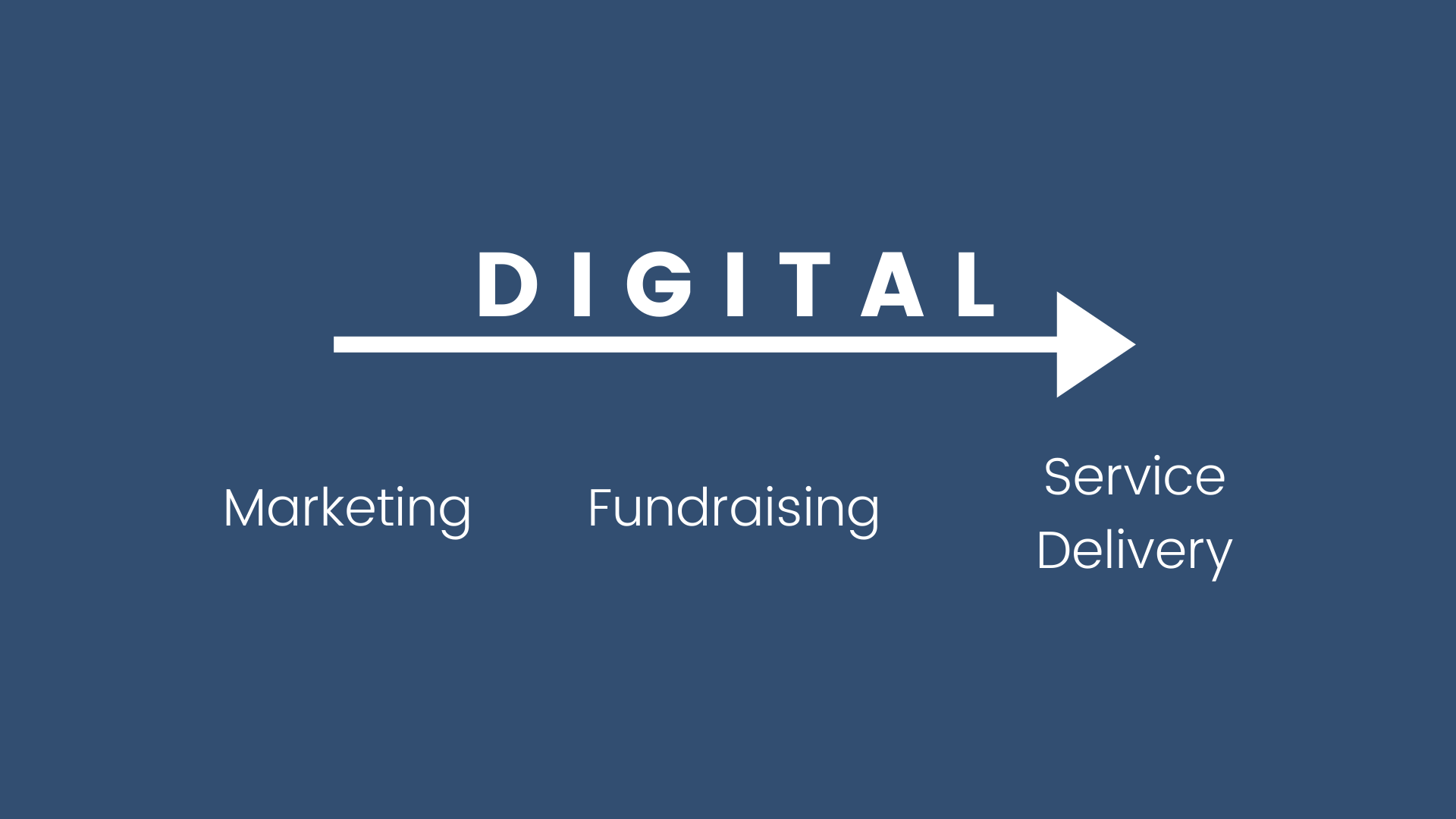
- To begin with, charities realised that digital had a lot of applicability to marketing. This era saw the creation of websites and tech that merely talked about the great stuff charities did.
- The age of digital fundraising was born, and charities realised they could take someone’s credit card details on the internet. This discipline still hasn’t fully matured, with lots of innovation still going on in the digital fundraising space.
- Where we were just as the pandemic hit, interestingly, was in an age of digital service delivery. Charities were no longer just talking about the great work they did, or asking for support for it, but actually were delivering some of this great work online.
Then… COVID.
The pandemic actually accelerated fundraising and service delivery – in a really interesting way.
In March 2020, charity staff, supporters, and service users had to abandon reality and exist purely in a digital space. During that time we commissioned research about the impact that had on people accessing charity services.
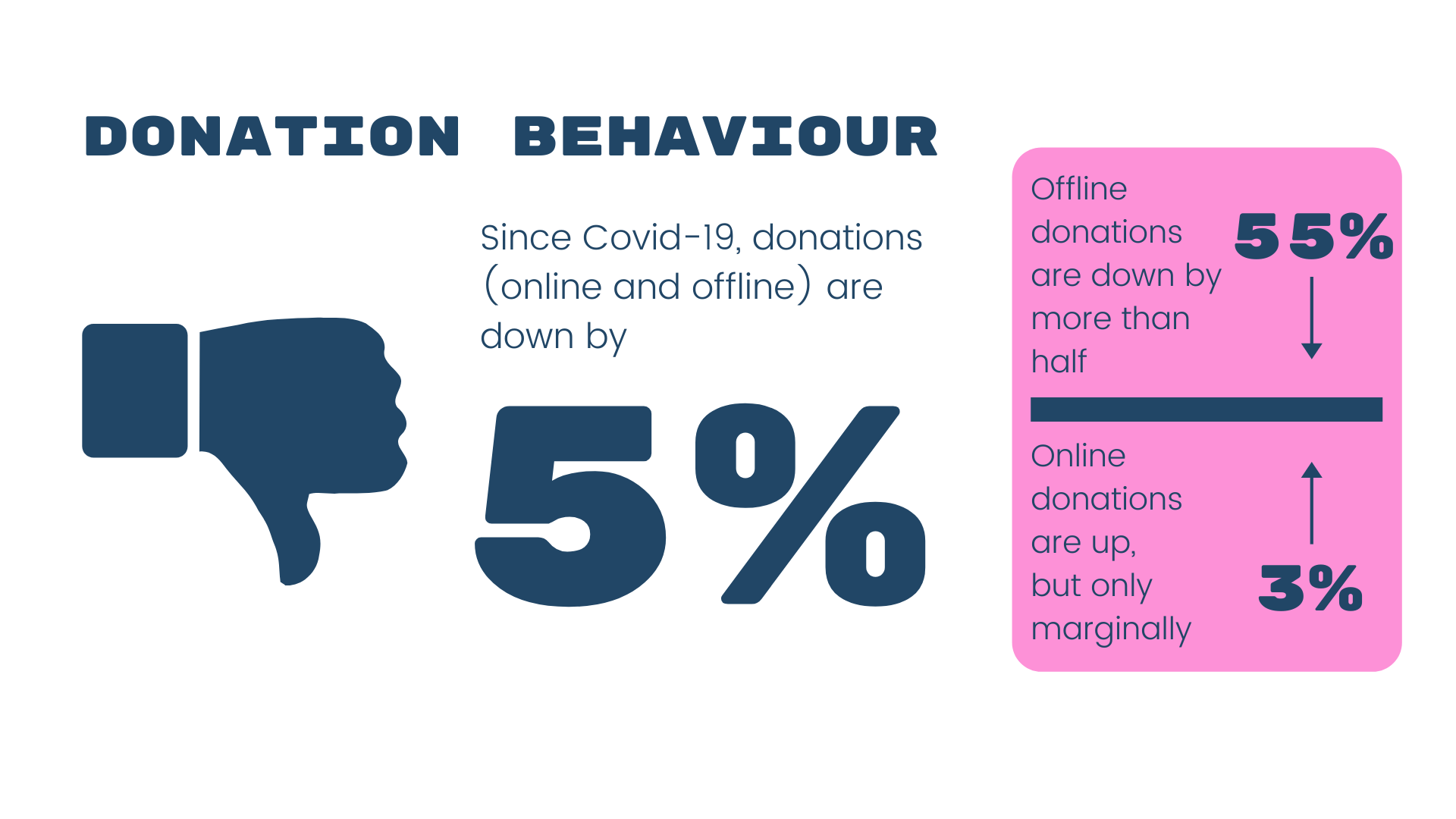
Digital fundraising had been heralded as a kind of saviour in this period. While it did help, digital donations were only up by an average of 3%.
Offline donations meanwhile were down by about 55%. And drilling down deeper into those stats revealed a lumpy, inconsistent picture. Some organisations reported their best fundraising year ever, while others reported their worst. So the transformation that was happening was not by any means evenly distributed.
We also saw a change in supporter and service user behaviour during lockdown.
Almost 50% of people have more video calls than they used to. People use social media more, instant message more, have more phone calls and more digital interaction with businesses. Around a third of people said that they can see those habits being sustained even after the pandemic. So, charities suddenly levelled up in terms of their customer base – be that fundraisers, or service users.
Now, over a year later, charities should think about how these behavioural changes will stick beyond this year, and how they can build on them.
A practical example of behaviour change comes from a charity we’ve been lucky enough to do some digital innovation with over the years: Turn2us. Amongst many others, one service they deliver is their Benefits Calculator.
It’s been live for years, but in 2020 the charity released data about public usage of the calculator:

Unsurprisingly, as lockdown hit there was an enormous spike in people accessing the tool. Interestingly, the growth in Turn2us’ service users wasn’t even. The major difference was a lot more people with mortgages–suggesting a lower level of poverty than the usual service user–were accessing the calculator.
This is something I’d encourage you to look into and analyse if you’re thinking about writing a funding application. What has changed in your audience over this period? This data could form a really key part in an argument to a funder about why you need support for digital innovation or to transform your digital infrastructure.
But before you build that argument, you need a funder.
Funders
In a sense, there’s no shortage of funders.
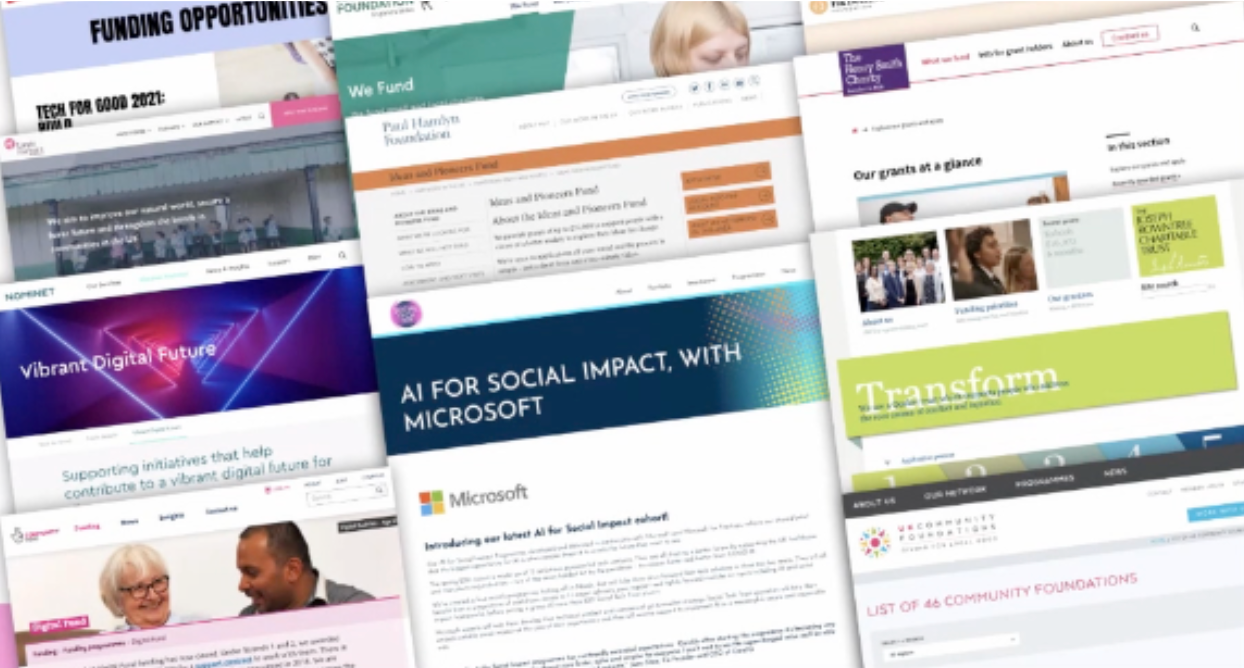
What we’ve learned from talking to funders is that they really want to support charities to have a more robust digital infrastructure. Charities really want that support. But for some reason those two things aren’t really interfacing.
Sometimes it’s a case of charities just not asking funders for this, possibly because of an assumption that it’s not something that would get looked upon favourably because it’s not as sexy or exciting as other innovative applications. Other times it’s because funders aren’t making it clear with their call outs.
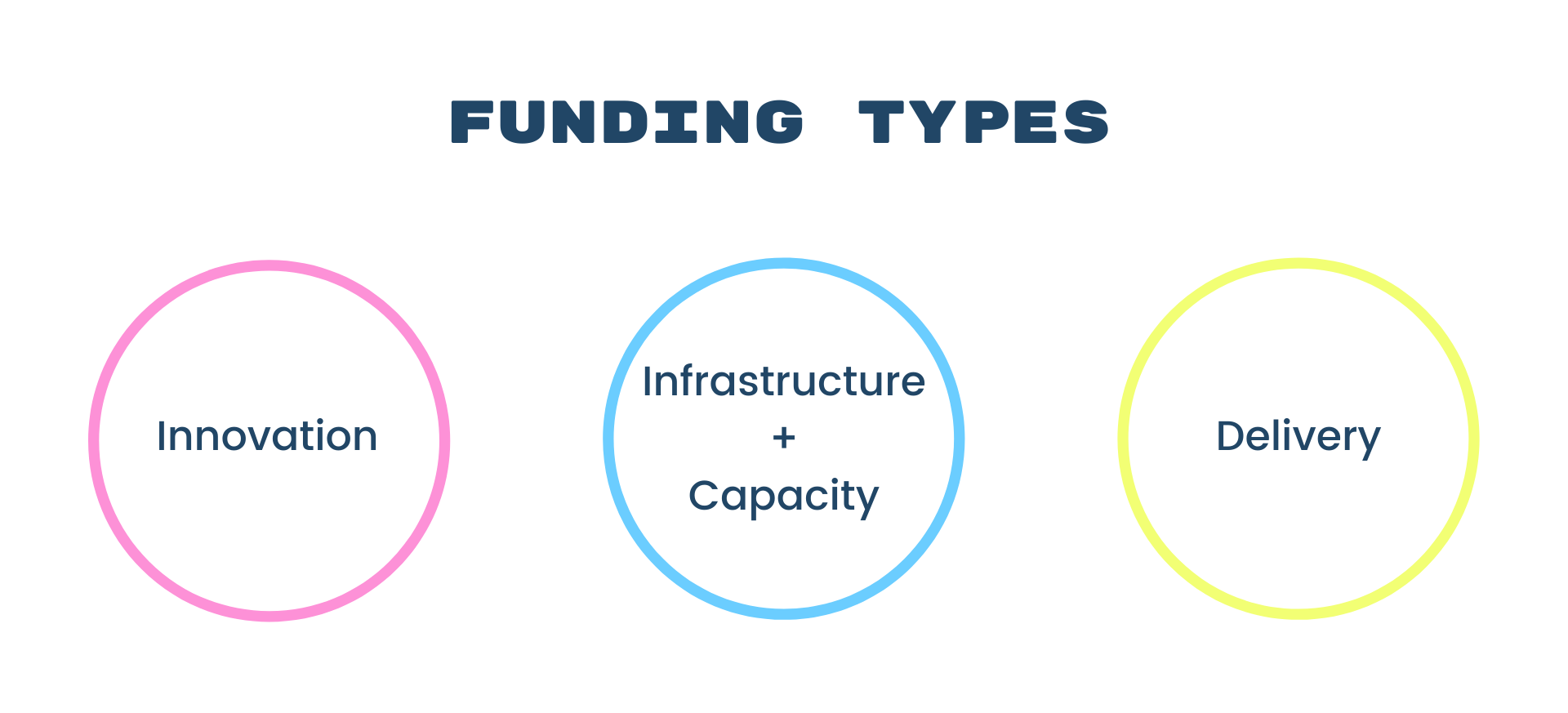
There’s countless charity digital funders out there but broadly speaking, their programmes can be slotted under three headings. If you Google charity digital funding, most of what you’ll find is in the first category: innovation. Sexy, exciting, new pieces of technology; develop an app to do this, use VR to solve this. While that is important stuff, fancy innovation is not appropriate for everybody, particularly with the massive pressure on charity digital infrastructures, skills, and capacity we’ve seen over the last year.
The next funding type–infrastructure and capacity–is a big one. More and more funders are saying that they want to support investment in this area, particularly funders like Lloyds Bank Foundation, who have done phenomenal infrastructure work in the last few years. A lot of community foundations are becoming open to these bids as well.
The last strategic area for funding is delivery. Imagine you’re applying for a trust and foundation grant to do service delivery, as you would under a thematic foundation (let’s say it’s women and girls). It doesn’t have to be a digital-specific fund for you to put in an application. Don’t restrict yourself by just looking at your Comic Relief tech for good funds, your National Lottery digital funds, your Esmée Fairbairn digital innovation funds. If you’ve got a useful service you want to deliver digitally, think about approaching your usual suspects as well.
We’ll have reached true digital maturity when we don’t make a big song and dance about ‘digital’ anymore. This year has accelerated progress towards that maturity – where digital is just a transmission medium, not the focus.
What you’re doing that funders want
After you’ve found your potential funders, you need to get in the right shape to achieve this funding. I’ve outlined five strategic areas to think about in that respect.
The good news is that you’re very probably already doing all these things.
The risk is that you might not see them like this, and therefore you don’t talk to funders about them. Or, you may have stopped doing these five things as we return to some form of normality, because you see them as things that you can let go of as you breathe out.
I’d strongly encourage you not to do that! Spotlight them, and hold on to them.
1. Doing what digital does best
My work involves a lot of people coming to me with the goal of taking services, fundraising, whatever it is – online. Many of these people are under the impression that their proposed online activity must work exactly like their offline activity, with the same functionality and for the same audiences.
Whilst it’s possible (with a large amount of funding) to build something completely bespoke, it takes a long time, a lot of resources, and a lot of energy. On top of that, you’ve also got to face the possibility that people might not take to a new way of doing things.
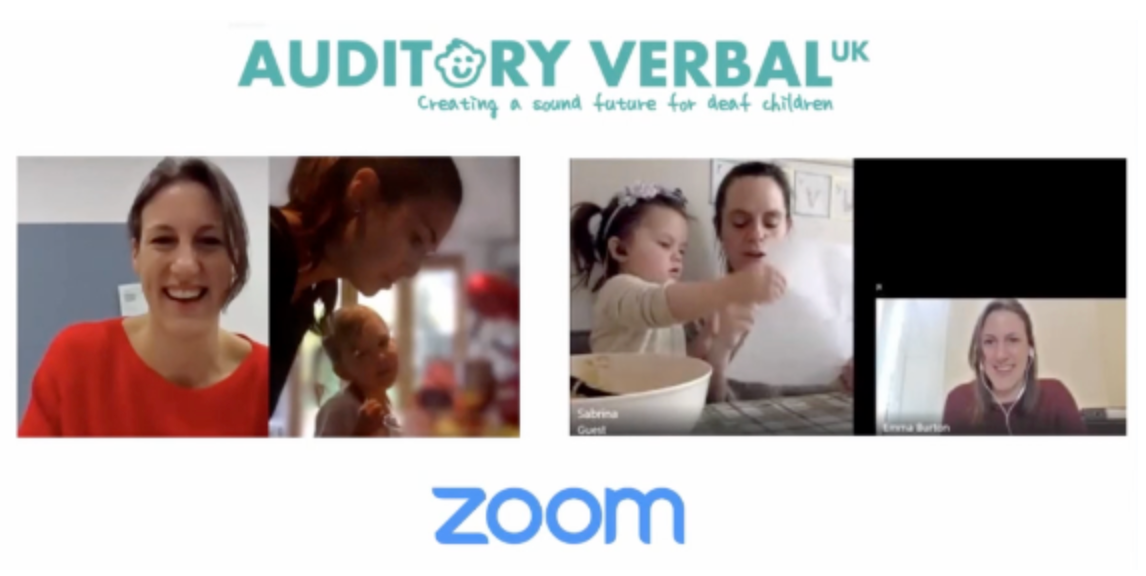
What the pandemic has taught us is that actually, there’s a lot of great stuff that digital already does. We should lean into that, instead of building costly (and possibly duplicate) solutions.
A great example of this comes from Auditory Verbal, a charity for deaf children. The charity has support workers and counsellors that reach out to parents and carers of deaf children, and give them coaching, advice, practical help, and emotional support.
These support sessions would normally happen face to face. When COVID hit they took it to Zoom – and actually found that this works better.
The parent or carer can be with the child at the time, and the counselor can see the interaction between parent and child in their home environment. The charity as a whole had a really positive experience with these online meetings – meetings that wouldn’t have even been possible last year without digital.
Lean into what digital already does. The cheap/free off the shelf solutions are the ones that have fostered a lot of progress this year. People who’ve spent most of the year fighting to try and bend technology to do things the way they’ve always been done have made less progress.
2. Being agile
I’m sure everyone is sick to the back teeth of the word by now. But my god, in the last year a lot of us have been well and truly agile for the first time.
If that sounds like your charity, have a little think about how that felt and what you’ve done. Did it look like managing a project a bit differently? Adopting a different mindset? A willingness to work at pace? A willingness to ask: what’s the simplest version of this that we can push live?
One organisation that’s been great at this is Growing Links, a community interest company in Cornwall. At the start of the pandemic they saw a huge extra demand for food distribution. They decided to use social media to respond to that, both from a crowdfunding perspective, and also for connecting to new service users.

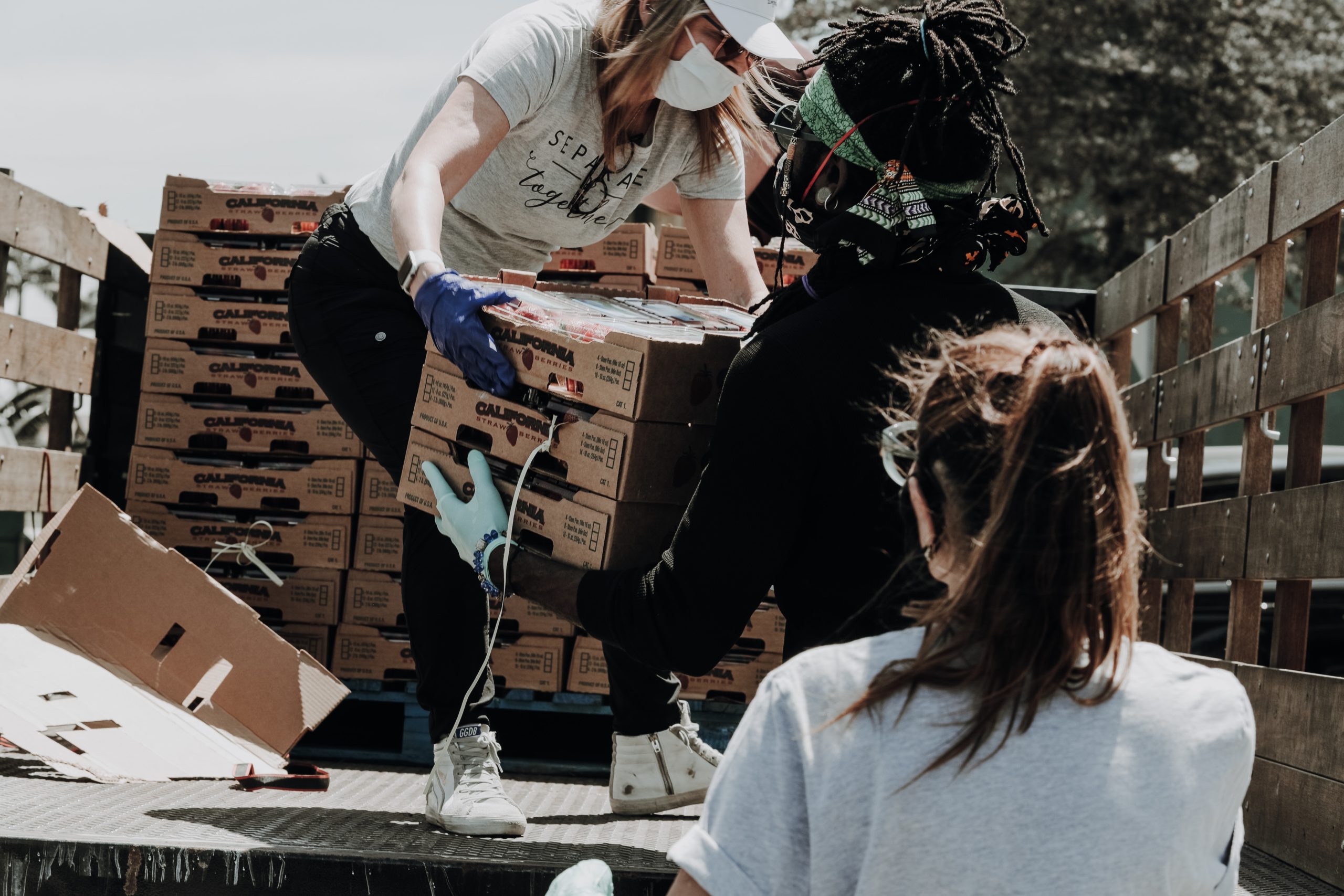
They created a hashtag on social media that people could use to request food, and they tracked those requests through Google Docs. Essentially, they pretty much set up an entire digital infrastructure for their fundraising and food distribution using free tools. Turning something like that around within a few weeks is truly being agile. It’s not just a method of project management, it’s a mindset and a willingness to apply it.
Funders will really want to see you embrace the principles of agile, and be overt about it. Tell them explicitly how and why you’ve learnt more about those principles than ever in the last year.
One of the organisations that we’ve been working with recently is a consortium of organisations called Medicines for Children. They built a website a few years ago that hosts various leaflets about drugs that are prescribed to sick children, so that parents who are administering the drugs always have an online resource if they’ve lost a physical leaflet or box. They stuck all their PDF leaflets on it and kind of forgot about it.
A few years later they realised the website was getting thousands of visits a day, suggesting they’d stumbled upon something with a massive amount of demand. They wanted to take it forward, and they had a hunch that this website could be better if it was an app, because these parents are busy, and having to type in a website or sit at a laptop might not be the best option for them.
So they came to us to talk about that. Our first step was to research their users, talking to them in depth. This is a good first step in any agile process – just talking to people who might use it.
We got parents and carers to use WhatsApp as a sort of digital diary, to take photos and send them in a group chat to us, just to show us what their life was like. The photos gave us a sense of what processes they develop for themselves, and lots of the photos were very emotive.
What the diaries showed us is that they had already solved the problem themselves. They were using pen and paper and the alarm app as their digital innovation. So we pivoted from wanting to build an app that’s full of leaflets, to wanting to make an app that gets rid of the leaflets and paperwork, and gives you proactive medicine administration reminders.
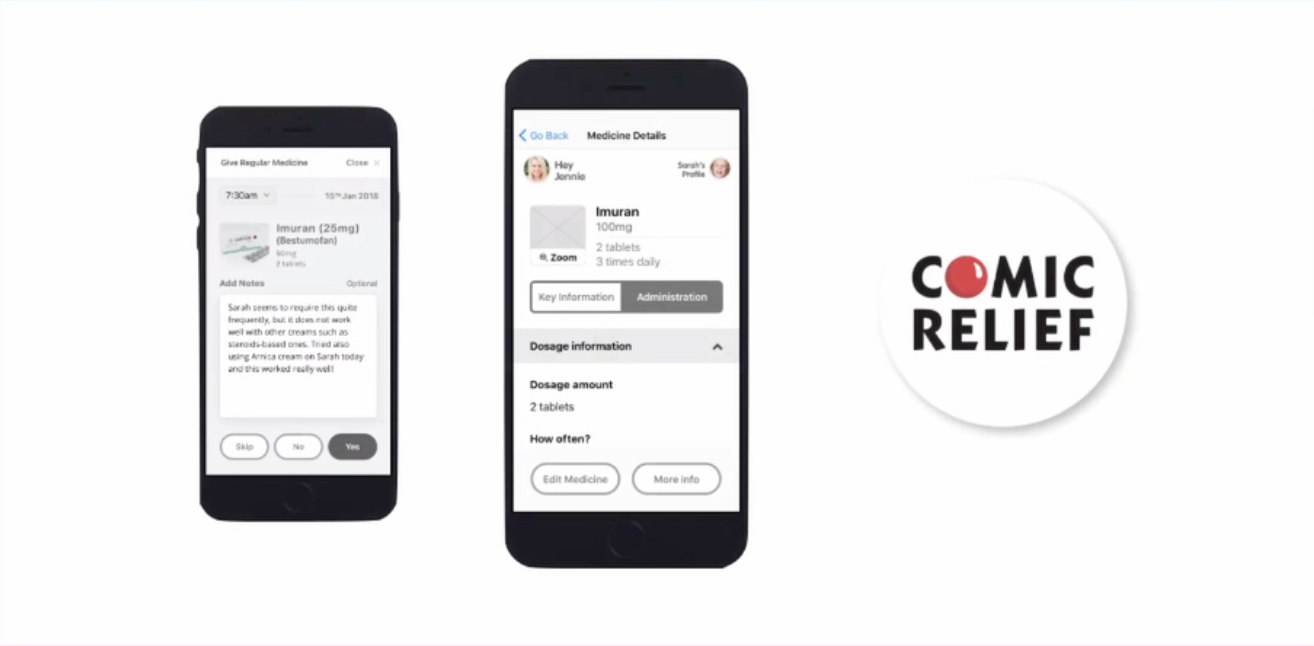
Because we’d done our homework, we unlocked support from Comic Relief. What those funders wanted to see was that we were prepared to work in an agile way; doing a little bit, trying it, getting user feedback. Most importantly, we had evidence that this was something users really wanted. We knew this because we gathered insight directly from them and had the visual evidence to back it up.
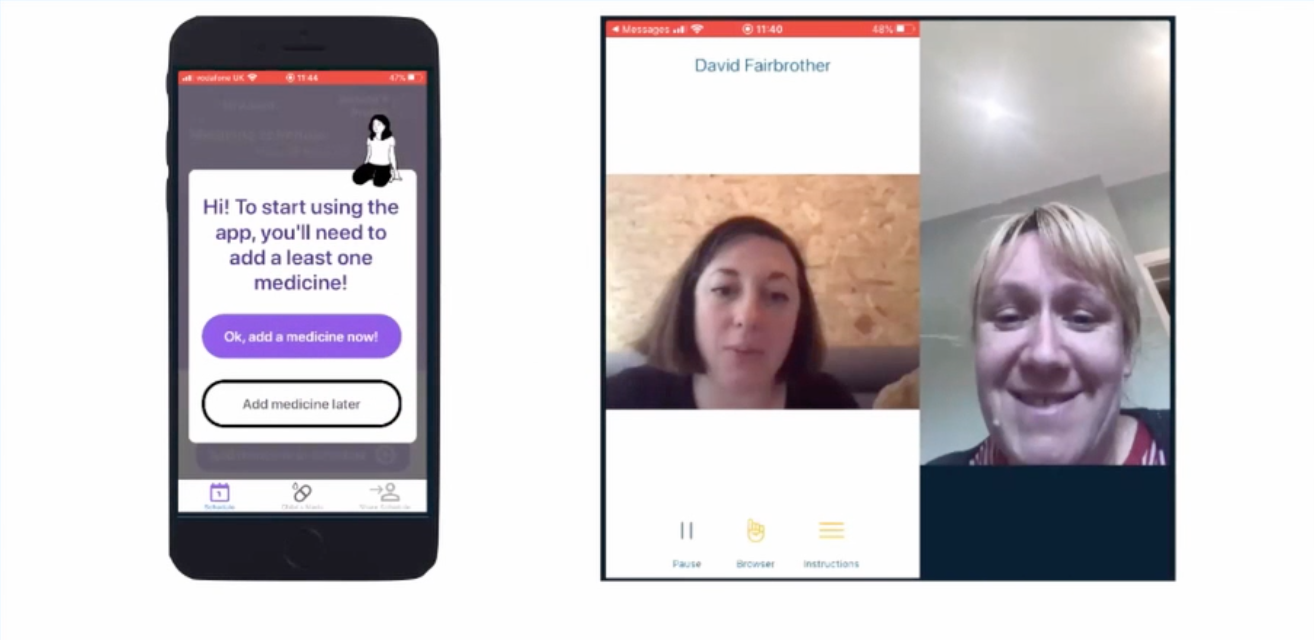
When we’d built it, we put it in the hands of parents to see how they got on with it. We got feedback saying that the best thing about it was not actually the reminders or logging of medicines – although that was useful. It was the fact that they could use the app and transfer the information to a respite carer, a family member, a pharmacist, whoever might be looking after their child on their behalf. It gave them an ability to step away from their caring responsibilities and have respite, which made a huge impact.
We ended up in a place we didn’t expect, with an entirely different product. User insights unlocked a further set of funding. This process of doing a little bit, getting evidence that users are engaged, then doing more, really fits a modern funding mindset.
It’s not about the idea. We were honest with these funders that we weren’t quite sure where we’d end up. It was about the process. That’s what made the project very fundable.
3. Researching users continuously
Talking to people who will use your product isn’t just a one off event. Last year the charity WellChild, who we also worked with on the Medicines for Children app, found that a lot of parents in their WellChild Family Tree Facebook group were requesting practical advice from each other about what to do regarding Covid, amongst other things.
They used this insight and decided to change their website from something that just talked about the services they could provide, to a vessel that actually provided all the information parents needed.
WellChild lost a huge amount of website traffic in 2020 for various Covid-related reasons; they weren’t holding their awards, there was no London Marathon. They actually more than replaced that traffic just with visits to this new section they created – because they listened continuously to users.
So just have a think, how can you continuously listen to your users? Is there a way to access evidence that you can take to a funder to show them your users have a need?
One of the things I absolutely love about this example is that it isn’t a contrived piece of user research. They didn’t invite parents and carers into a focus group to ask ‘Hey if we put this online, would you use it?’ Spoiler alert: people always say yes to that question regardless of how bad it is. Here, WellChild actually observed user behaviour and interactions out in the wild, instead of asking questions about imagined behaviour.
4. Asking for help (not just cash)
Not all funding is cash. We’ve seen this from various companies. Take Microsoft – they provide Microsoft 365 Business Premium for free.
More and more companies have realised that they need to do more to help charities in this time. There’s been some really encouraging signs from the CSR managers that I’ve spoken to in tech companies, that this is a mindset that is going to continue beyond the pandemic.
So stop and think: do you need to buy that software? Do you need to hire that agency? Or is there somewhere that will give it to you for free?
Over the years, we’ve been working with Age UK on their telephone befriending service which addresses the chronic loneliness that many older people face. Together we developed an online matching service which matches volunteers to older people who had asked for a weekly friendship call.
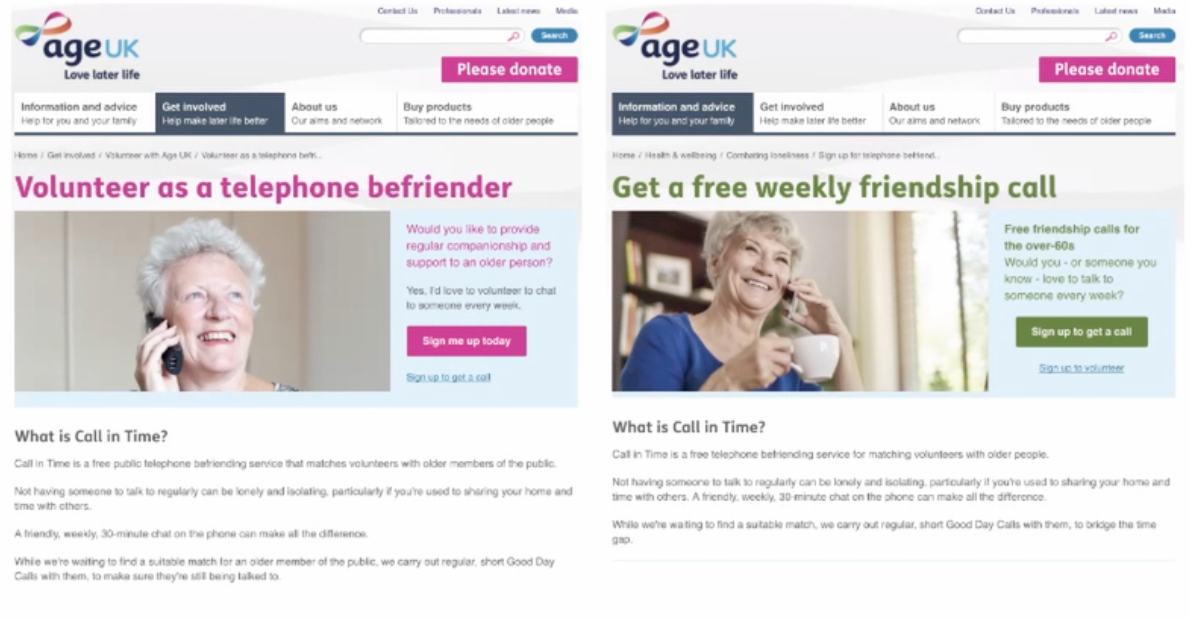
Instead of the older people having to use a laptop, the system we developed simply calls their phone at an agreed time without the volunteer or user having to know each other’s phone numbers. That innovation meant Age UK could scale the service massively, because they weren’t passing phone numbers across.
The drawback to this was that the Age UK team were still doing a lot of admin and safeguarding work for the service manually, which just wasn’t sustainable on a larger scale.
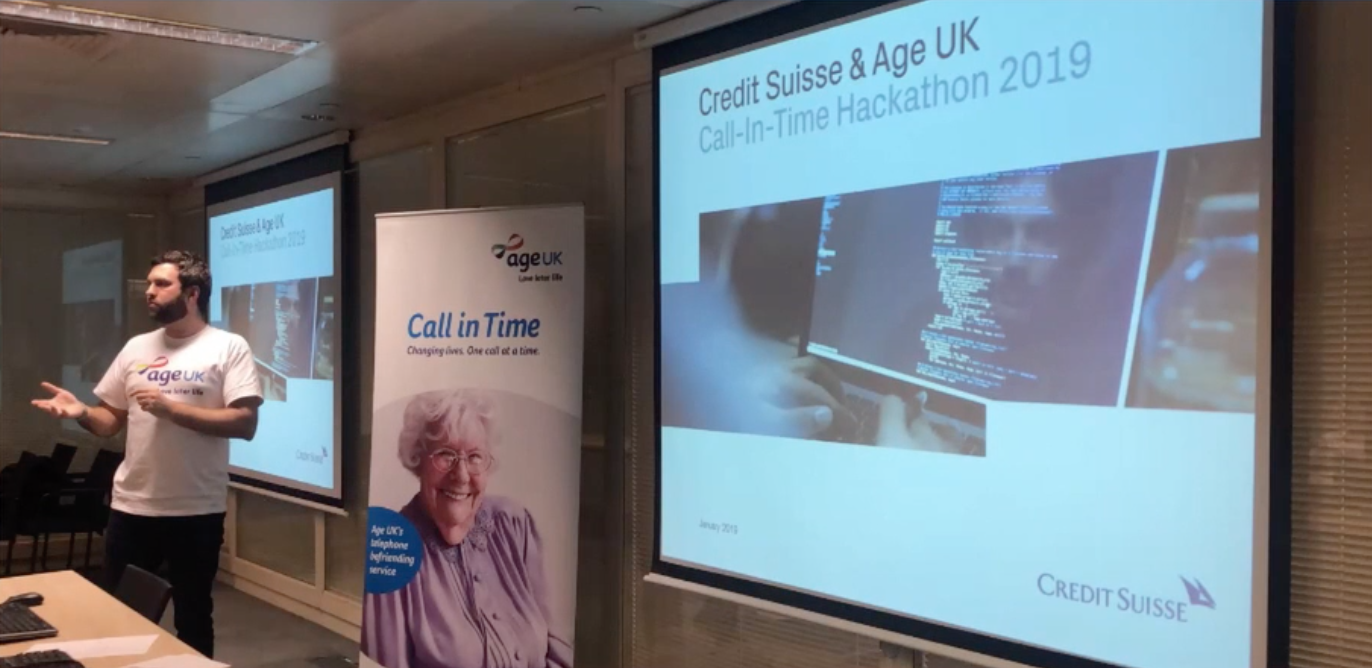
Rather than ask for funding to address this, what we did was look at their corporate partners who had fundraised already for Age UK, and what capabilities those corporate partners had.
One of these partners was Credit Suisse, an investment bank who have a lot of data science and mathematical capability. We reached out and asked if they fancied having a hackathon with some of their brightest techies. We would brief them on this social problem we’re trying to solve, and they can write some code that would really help us make a difference.
In two days, what they were able to come up with was a piece of technology to listen to the friendship calls and automatically flag the ones that had a safeguarding risk attributed to them. This was one of the processes previously being done manually by the charity, taking a huge amount of resources, and bottlenecking the growth of the service.
The end result is something we could have written to a funder for, and asked for a huge amount of money to build. In the end, what we did was a really efficient way to get over the hurdle that the service was facing.
So, don’t just ask funders for cash all the time. Think about your corporate partners and what they could offer in terms of time, expertise, or product.
5. Having a digital culture
People think of digital as different things. For some, it’s “Do we have email?” or “Are we using Microsoft Teams?”. Sometimes people think of digital as “Do we deliver our service digitally?” or “Can we invent an app?”.
How I like to think about digital is broader than that. It’s about an organisation having a digital culture, one of understanding and capability. Understanding what they do digitally. Capability to sort out their own commissioning of infrastructure problems. Understanding when innovation is needed. Capability to identify opportunities to use digital to make a difference.
In actual fact, last year so many charities demonstrated the first signs of a digital culture emerging in their organisations – because they had to. Charities had to deliver their services online. For the first time, many charities are looking into what solutions are needed and have managed to get the tools for those solutions.
The digital culture charities are developing is precious. It would be a tragedy for them to lose it because lockdown is lifting, and therefore there could be a natural tendency to regress to their regular way of working.
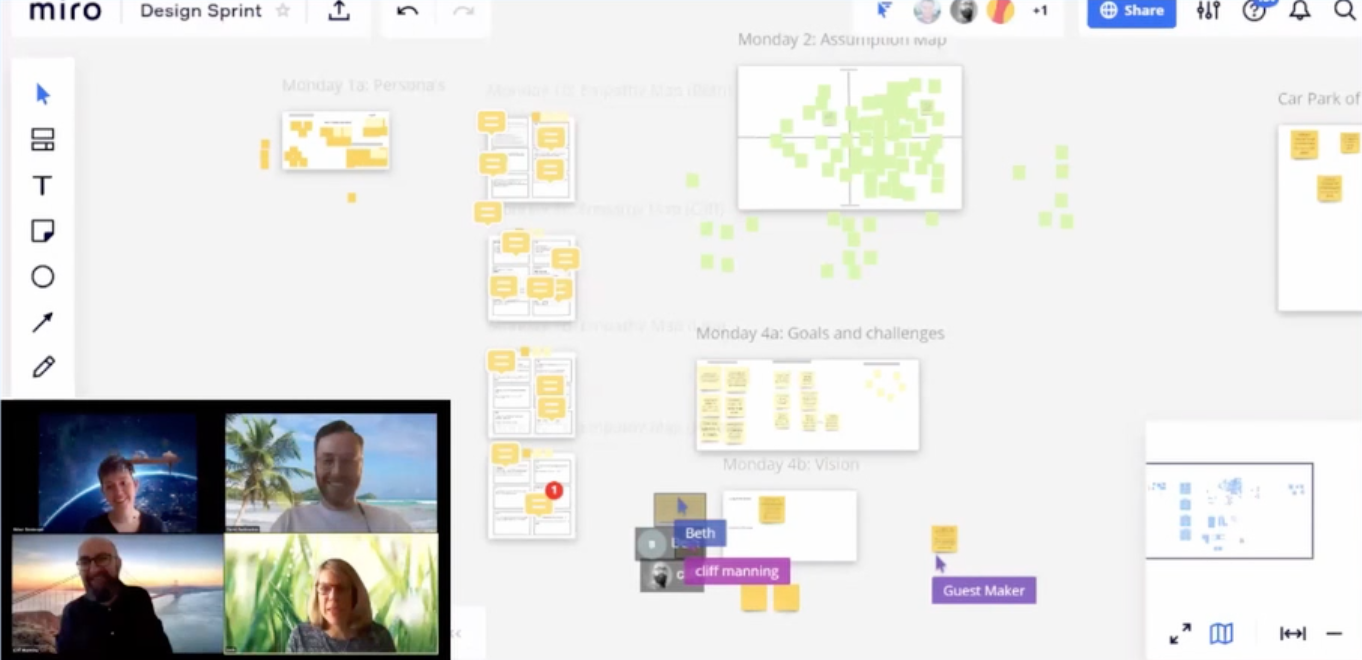
Of course, there will be a shift as we all return to the ‘real’, or the hybrid, part in-person, part digital world we’re living in. But do hang onto that change that your charity has felt in its culture. Hang onto the tools you learnt about along the way, the ones that allowed your team to deliver remote meetings and workshops. Hang onto what you learnt about delivering your service online and the new audiences you reach by taking a digital approach.
Continue a dialogue with your team about their confidence with digital, what skills they need, and what opportunities they’re seeing. It’s important to celebrate digital progress, no matter how small, to really foster that culture and ensure that it’s bedded into your future.
What next?
‘What do we do next?’ ‘What about the next pandemic?’ are questions circling amongst charity leaders at the moment.
I don’t think the next pandemic will be something like Covid (I certainly hope it isn’t.) Instead, there will probably be ripples of pandemics coming from the current one. Things like digital exclusion, widened inequalities, the mental health crisis.
We need to stay resilient and as future-proof as we can be. We need our services to be more scalable than ever. We need to be grasping every opportunity that digital fundraising provides. Now is not the time to take your foot off the gas, to stop handing in funding bids for your digital capabilities. Now’s the time to rev even harder, to solidify positive changes so we’re ready to face whatever our sector is faced with next.
